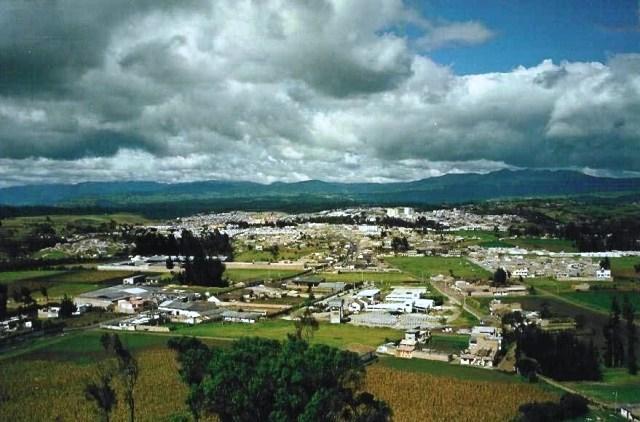Ipiales, Nariño, Colombia
Suggest Place to Visit
398
Track to location with GPS |
 |
Founded date: January 1, 1539
Name of the founder (s): At the time of the conquest the region was visited by various conquerors such as Diego de Tapia in 1535, Pedro de Añasco, Juan de Ampudía in 1535, Pedro de Puelles in 1536 and Lorenzo de Aldana in the year from 1539.
Although it was believed that it came from the Quillacingas, researchers and diligent about these topics, they clarify that it comes from the Pastures, in lands that were part of the Mayo, Juanambú and Guáitara river basin. Los Pastos occupied the territory that from south to north extended from La Tuza (San Gabriel) in the Republic of Ecuador to Ancuya in Colombia.
Current Urban Structure
The first settlers, the Protopastos, inhabited the region of the inter-Andean alley in the plateau of Túquerres and Ipiales in the Republic of Colombia and the province of Carchi in Ecuador, about 1,000 years ago, according to experts and that in the quaternary era was covered through a large lagoon.
The Inca empire within its expansionist zeal not only towards Chile, but to the north, found a natural fortress, reinforced by the bellicosity of its inhabitants on the Rumichaca bridge, around 1480, which is why, to the Pastos from the Ecuadorian north they dominated them, but they never could with the natives of the region.
Ipiales subsisted since unknowable times as an indigenous population in the upper area of Puenes and Alto de las Cruces, dominated by Piales and later Ypiales, a group of straw-covered bahareque huts in a number no less than one hundred.
In 1538, shortly after the conquest, these lands were under the jurisdiction of the Bishopric of Cuzco and the vicarage of the Marquis Francisco Pizarro in the domains of the provinces of Quito and Quillacinga.
In 1591, ID of the PARDO - Felipe Segundo, the resguardos were created, the purpose of which is to preserve indigenous labor, but without being able to sell it or acquire more land. The Chalamag, Ipiales, Idcan, Inchuchala, Tatag, Quelúa, Igue, Nayalab, San Juan and Tulanquela reservations were handed over.
Later, different forms of administration of these territories come through the encomienda and it is until 1580 that there were no signs of foundation, ranches and huts scattered around nearby, in the best place, the Church and the dismantled convent or doctrinal house, farms and pastures of the encomendero and nothing else.
In 1584, Don Pedro de Henao, chief chief of Ipiales, Potosí, Males, Canjales and Puerres, traveled and before the King of Spain, Felipe II, obtained more than 23 royal certificates, for this and his Pastos Indians delivered to the Royal Court. from Quito and to the diocese of Cuzco.
In 1590 the brotherhood of Nuestra Señora del Rosario de Ipiales was elected. In 1593, corregidores de indios were appointed, who received the tributes for the crown, which were previously done by the encomenderos. The encomiendas were areas assigned to an indigenous community, under the command of a chief.
In 1615, Don Juan Caro, administrator of the indigenous distribution of Ipiales, informed the Pasto council, when claiming his salary, that he left twelve houses that make up the town of Ipiales and in them twenty-three inhabitants to whom he distributed land of bread to sow for mandate of the Quito audience and a hermitage.
The city of Ipiales is located to the south east of the department of Nariño, on the border with the Republic of Ecuador, at an altitude of 2,900 meters above sea level and with an average temperature of 12 ° C. The main economic activity of Ipiales lies in agriculture, as well as in trade, taking advantage of its border with Ecuador, tourism also plays an important role.
The city of Ipiales is located to the south east of the department of Nariño, on the border with the Republic of Ecuador, at an altitude of 2,900 meters above sea level and with an average temperature of 12 ° C. The main economic activity of Ipiales lies in agriculture, as well as in trade, taking advantage of its border with Ecuador, tourism also plays an important role.
Due to the great commercial exchange with Ecuador, Ipiales is considered the second land port of Colombia.
Ipiales is known as The City of Green Clouds, a name derived from the curious coloration of the clouds at sunset.
The main tourist attraction of Ipiales is the Sanctuary of Las Lajas, a wonderful architectural jewel of the 18th century, with various later renovations, in the neo-Gothic style, built in the canyon of the Guaitara River, rising imposingly over the abyss, a characteristic that makes it unique in your gender in the world.
15 kilometers from Ipiales is the Nevado de Cumbal Volcano, at 4,764 meters above sea level, which can be clearly seen from Ipiales and from the city of Tulcán in Ecuador, this volcano has not registered any activity since 1930.
Ipiales is geographically located in the southwestern part of Colombia on the highlands of Túquerres and Ipiales, 80 km from the capital of the Department of Nariño. It is communicated with the interior of the country mainly by the Pan-American highway, which also leads to the Ecuadorian city of Tulcán, after crossing the Rumichaca International Bridge; thus known by the name that the ancient settlers gave to the adjacent natural bridge that was formed as a result of the action of the Guáitara river on the rock and which means stone bridge in the Quechua language.
Economy
The most important economic activities for the inhabitants of the Municipality of Ipiales are agriculture, livestock and commerce. Natural resources are abundant and adequate throughout its territory. However, due to its status as a border district in the Urban Center, commerce occupies an important place due to the exchange and transit of products and merchandise with other economic regions.
In the early days of the year 2000, the city of Ipiales, due to its status as a border district, the National Government declared it a Spatial Economic Export Zone, with the purpose of improving the economic, institutional and social development of this region. Other objectives also include promoting the development of manufacturing, promoting technological improvement and the export industry, all with the purpose of increasing the generation of employment and improving the welfare level of the population.
As a border city, Ipiales registers high rates of commercial exchange between Colombia and Ecuador, making it the second most important border for Colombia after Cúcuta, the border with Venezuela.
Black and white carnival
The cultural roots of our Carnival go back to pre-Columbian times with dance, music and representation, allowing us to rediscover our cultural identity. Carnival has American, African and Spanish influence, it is tricultural, that is, it has cultural elements of three different peoples that have merged and as a result of this process fun and games have emerged.
Carnival has been established by the people and throughout its history it has achieved significant progress and development, dimensioning itself in such a way that today it is one of the most important popular festivals in the country. They are 10 days in which it is allowed to laugh, cry, love, uncover the hidden feelings.
Carnival Course
December 28 April Fools Day
On December 28, or April Fool's Day, the symbolic element of WATER was played recently. For the culture of the Pastures, bathing means an act of purification of bodies and souls. Since 2000 it has been called confetti day, a paper with thousands of colors that is launched among the attendees, an element that has replaced the precious liquid. On this date, meetings of orchestras and musical groups are held, an event applauded and applauded by the crowd that gathers around the Parque 20 de Julio. This day is used by the local media and the common people, for jokes, jokes and good humor under the expression "pass them by innocent."
December 31, Farewell to Old Years
On this day the collective farewell to ´´the old years´´ takes place, with the symbolic element of FIRE predominating, a rite that becomes an act of purification-death and an element of transition in time, thus one year ends and begins other. This day, dolls made of various materials, techniques, motifs and messages are presented that characterize characters of regional, national and international importance, who have made positive or negative history during the year that ends, using a satirical or critical language. Through a colorful parade that runs through the important streets of the city, a parade that is led by the sovereign of the carnival or Queen of Ipiales, who is animating the celebration.
Widows, who are generally represented by men dressed as women in colorful or funeral outfits who after each old year mourn the loss of their loved one, are perhaps one of the main attractions, giving them a touch of mischief, flirtation and good humor.
Each old year brings its own will, leaving the inheritance in a fun and entertaining way that the media read after the parade.
Every street, every neighborhood, every company, every family, meets around the old year, which is drawn up days before.
During the Carnival sadness, bad temper, boredom and stress are prohibited. Everything is joy, friendship, merriment
January 2, Youth Carnival
It was institutionalized in 2002, the main attraction is the spectacular Andean music concert, which through its notes interprets the feeling of a people, alternating with groups of other musical genres with other varied rhythms, this activity is supported by a imposing parade with the participation of the different educational institutions that make a superb but also joyful and colorful show of dance and folklore.
The waste of joy has no comparison, it is played with cosmetics especially green, which means hope and different colors smeared on the faces of locals and strangers.
January 3 Carnival of the Province
It is the festival of the union of the peoples, which are made up of Ipiales, Aldana, Guachucal, Carlosama, Cumbal. Potosí, Cordoba, Puerres, Iles, Gualmatan, Pupiales, Contadero these represent the twelve municipalities that made up the association of municipalities of Obando, each municipality brings its respective delegation headed by the first authority, its government team and the most representative people of its community, placing the touch of carnival joy with its band that sings the typical musical notes of regional and national folklore, its queen, its gastronomy, its musical groups, its dance and its floats that waste color and majesty in their designs, this day ends with a meeting of musical bands distributed around the park July 20.
January 4, Carnavalito
It is a parade full of color, magic, charm, dreams, fantasy. On this date the children put their imagination, ingenuity and creativity to work, making adults amuse, with great waste of art, translated through murguitas, tiny floats, dance groups, theater, accompanied by their little queen, the children become protagonists, cultists and seedbeds of the miniature carnival, which will help them climb the carnival of adults and thus guarantee the continuity of our beautiful tradition.
January 5, Black Day
It is the game of the black race related to the symbol of the EARTH, which appears in the black cosmetic that represents the matter from which we come and become after death. The parade begins with the arrival or entry of the Ipial family in an indigenous version, who represent the culture of the pastures, led by the Cacique Ipial who every year brings a message to his people, through rites, myths, legends, beliefs, customs and traditions. The participation of the municipal administration with its central and decentralized entities, animate the parade accompanied by murgas, comparsas, costumes and elements of the carnival, during the course, the waste of carioca (carnival foam) and the disguised painting with black cosmetic in the faces of locals and tourists make this day unforgettable, where we who have lived it for our entire existence eagerly await it and where tourists are engulfed by beauty, culture and joy and year after year they have a commitment, to return .
January 6, White's Day
Nowhere else in Colombia will you be able to enjoy the game of white as in our land.
The white day is related to the symbolic element Air, when the talc is thrown at other people or into the air. It is an impressive and unforgettable parade where the description is short. You have to be there to live it and feel it in all its splendor.
That day no one can stay at home, the streamer, the foam, the cosmetic, the talcum powder, the confetti, the music, the noise, the brandy, the boiled fruit, and the contagious applause as the beautiful floats pass by, will be contagious , producing a mass hysteria that has no name, not a single minute must be wasted, the auction has come and all the happiness and frenzy will be extinguished and the next day everything returns to normal.
Social strata are not respected here.
Comments
We don´t have yet any comments about:
Ipiales
Ipiales
Be the first to leave a comment as it is very important to inform other people
Outros locais a visitar
Within a radius of 20 km from:Ipiales
Basílica Santuario de Nuestra Señora de las Lajas |
| 6,5 Km |
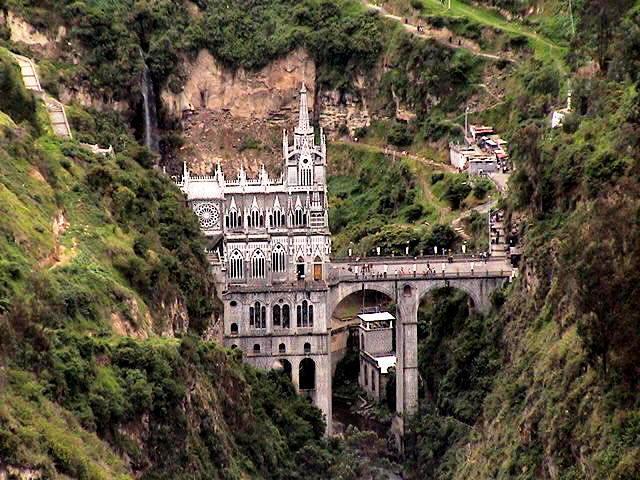 |
Cemitério Municipal José Maria Azael Franco (Tulcán) |
| 8,1 Km |
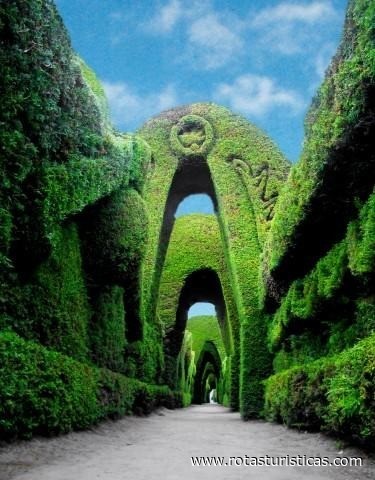 |
Catedral de Tulcán (Equador) |
| 8,3 Km |
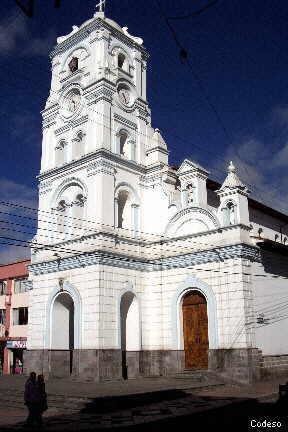 |
Cascata El Púlpito (Tulcán) |
| 8,7 Km |
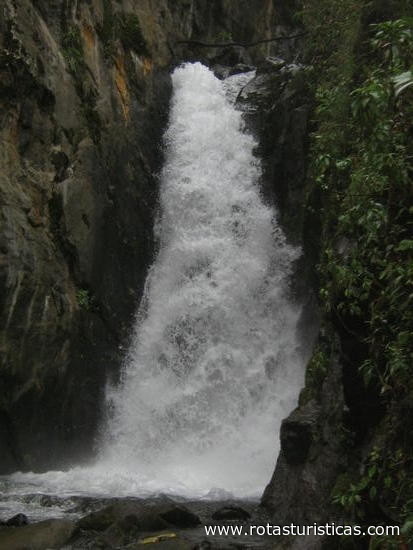 |
Hotel reservation near Ipiales within a radius of 20 km
No results
Why to book with ROTAS TURISTICAS
The best prices
Our partnerships with the world´s largest operators offer research on the best market prices.
More options
At Rotas Turisticos you can book the hotel, buy the air ticket, book the transfer from the airport to the hotel and vice versa, book the local excursions, rent the car, take travel insurance and consult the places to visit and where to go.
Holiday Tips & Destinations
Hundreds of holiday destinations with all the options that allow you to easily choose the destination that best suits your dream vacation.
ROTAS TURISTICAS
Links


